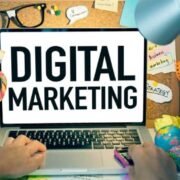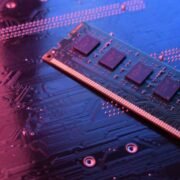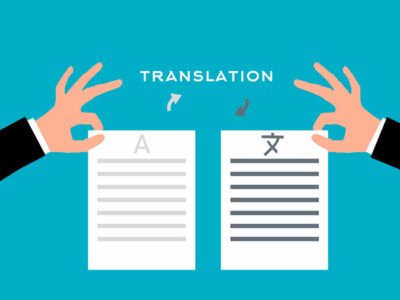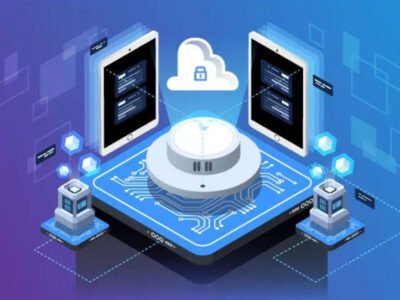In the ever-evolving landscape of technology, the ability to seamlessly convert images into editable text has become a transformative capability. The advent of Convert Image to Text services has ushered in a new era, where pixels are not just visual elements but building blocks for paragraphs and narratives. This article delves into the enchanting world of these services, exploring their functionality, applications, and the impact they have on various industries.
Unraveling the Technology
Convert Image to Text services, often powered by Optical Character Recognition (OCR) technology, are the alchemists of our digital age. They can magically transmute the visual information contained within an image into readable and editable text. OCR works by analyzing the shapes and patterns of characters in an image, interpreting them, and converting them into machine-readable text.
How OCR Works:
- Image Capture: The process begins with capturing an image containing text using a device such as a camera or scanner.
- Preprocessing: The image undergoes preprocessing, where enhancements like noise reduction and contrast adjustments are applied.
- Text Detection: OCR algorithms identify the regions of the image that contain text.
- Character Recognition: The identified text regions are analyzed character by character, and each character is recognized through pattern recognition.
- Text Output: The recognized characters are then transformed into editable text, ready for use in various applications.
Applications Across Industries
The versatility of convert image to text services makes them invaluable across diverse industries, revolutionizing the way information is managed, accessed, and utilized.
1. Document Digitization:
- Paper to Digital: OCR facilitates the conversion of physical documents into digital formats, reducing paper dependency and enabling efficient document management.
- Searchable Archives: The converted text allows for easy indexing and searching within digital archives, boosting accessibility and retrieval speed.
2. Data Extraction and Analysis:
- Data Mining: Businesses leverage OCR to extract valuable information from invoices, receipts, and forms, streamlining data entry processes.
- Analytics: The extracted textual data becomes fodder for analytics, enabling businesses to derive insights and make data-driven decisions.
3. Accessibility Enhancement:
- Text-to-Speech: OCR plays a pivotal role in creating accessible content for individuals with visual impairments by converting text into audible formats.
- Language Translation: The ability to convert text from images opens avenues for language translation services, breaking down communication barriers.
4. Education and Research:
- Digitizing Books and Articles: Libraries and educational institutions use Convert Image to Text services to digitize books, articles, and historical documents, preserving and disseminating knowledge.
- Plagiarism Detection: Academic institutions employ OCR to detect plagiarism by converting scanned documents into editable text for easy comparison.
5. Artificial Intelligence Integration:
- Training Data Creation: OCR-generated text becomes training data for machine learning models, enhancing their ability to recognize and interpret text in various contexts.
- Content Analysis: AI algorithms analyze the converted text for sentiment analysis, content categorization, and other applications.
The Evolution of OCR Technology
The journey from early OCR systems struggling with accuracy to today’s highly sophisticated models has been remarkable. Modern OCR technologies boast remarkable accuracy rates, even in the recognition of complex fonts, languages, and diverse document layouts.
Key Developments:
- Deep Learning Integration: The integration of deep learning techniques, particularly convolutional neural networks (CNNs) and recurrent neural networks (RNNs), has significantly improved OCR accuracy.
- Multilingual Support: OCR systems now support a myriad of languages, making them versatile tools for a globalized world.
- Real-time Processing: Advances in hardware capabilities and algorithm efficiency have enabled real-time processing, making OCR applications more responsive and user-friendly.
Tips for Effective Use
While Convert Image to Text services offer incredible capabilities, maximizing their effectiveness requires some strategic considerations.
1. Quality of Source Images:
- Ensure high-resolution and clear images for optimal OCR performance.
- Minimize background noise and distortions in images to enhance accuracy.
2. Language and Font Considerations:
- Choose OCR solutions that support the specific language and font types present in your images.
- Verify the accuracy of text conversion for languages with unique characters or scripts.
3. Post-Processing Checks:
- Perform thorough proofreading of the converted text to catch any errors introduced during the OCR process.
- Implement automated checks for data validation to maintain the integrity of the converted information.
4. Integration with Workflow:
- Integrate Convert Image to Text services seamlessly into existing workflows for enhanced efficiency.
- Explore API options for easy incorporation into custom applications and systems.
The Future Landscape
As technology continues to advance, the future of Convert Image to Text services holds even more promise. Here are some anticipated developments that will shape the landscape:
1. Enhanced Multimodal Capabilities:
- Integration with other modalities such as audio and video for comprehensive information extraction.
- Improved contextual understanding for more accurate interpretation of images.
2. Edge Computing Integration:
- Increased focus on edge computing capabilities for on-device OCR processing.
- Enhanced privacy and security measures for sensitive information.
3. Industry-Specific Customization:
- Tailoring OCR solutions to meet the unique requirements of specific industries, such as healthcare, finance, and legal services.
- Specialized training models for improved recognition in niche domains.
Closing Thoughts
Convert Image to Text services have indeed woven a spellbinding narrative, transforming the way we interact with visual information. From simplifying document management to fostering inclusivity through accessible content, the applications are diverse and impactful. As OCR technology continues to evolve, we can expect even more enchanting developments, further blurring the lines between pixels and paragraphs. Embracing this magic promises a future where the seamless conversion of visual data into actionable text becomes an integral part of our digital journey.

















Comments